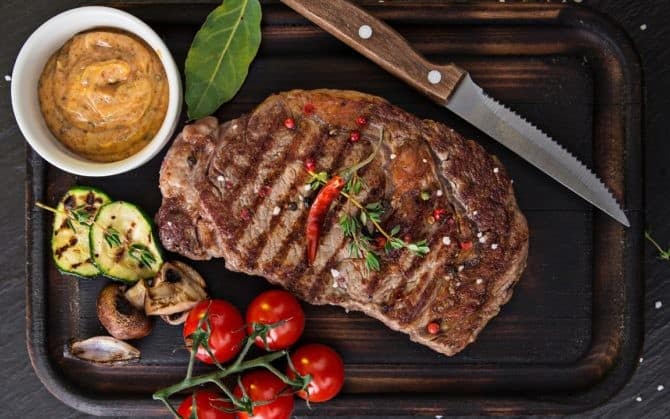How long before cooking should you salt a steak?
Since each piece of roast is different, a safe method to follow is to salt it about an hour before you cook it per. Empty thick (so if you have a 5 cm steak, salt it 2 hours before cooking. It). This causes excess moisture in the steak to drain out during frying.
Do you need to salt the steak in advance?
Balistreri says that you should always salt the steak before cooking. “The salt starts to boil the surface of the steak and releases moisture from the muscle if it is salted too early. The ideal is to keep steak juices salted before cooking, says Balistreri.
Is it better to salt a steak before or after grilling?
When grilling a steak, it is best to add salt before cooking it, as the salt through osmosis removes the water from the steak, as there is more water inside the meat fibers than the outside, resulting in a better steak taste.
Does salting the steak make it soft?
Salt softens a piece of meat or the stalk of fibrous vegetables, just as it preserves them. Adding salt to the outside of a steak removes moisture from the steak. In this process, the lean muscle proteins in meat are broken down, making them more juicy and soft. All thanks to salt!
Do you rinse the steak after salting it?
To clean. When the rest period is over, wash both sides of the steak under running water to remove excess salt. During rinsing, the surface of the meat is rubbed lightly and gently and stretched to remove most of the outer salt. You must rinse thoroughly, otherwise the meat tastes very salty
How much salt do you get on the steak before grilling?
Sprinkle 1 teaspoon of kosher salt on each side of the steak. Leave salt: 1 hour for 1 ″ thick steak. For example, if the steak is 1/2 ″ thick, let the salt stand for 30 minutes. Rinse off all salt. Wipe thoroughly with a paper towel. Season the steak with pepper or other spice (do not add salt)
Salt dried meat?
But salt began to be used. True healing not only dries the meat, it also changes its taste deeply. An example of this is the difference between ham and fresh pork. Both Rodgers encourage easy dry curing by salting the meat and letting it dry without a lid in the fridge for a few days before cooking.
Is pink salt good for steak?
Use it to season steak Use Himalayan pink salt is the perfect way to cook amazing steaks at home. Natural salt absorbs the juice from the meat during cooking, so your steak retains its flavor. Once you’ve tried it once, you’ll never go back to unsalted steak.
How does Gordon Ramsay season his steak?
Pour the pan to the heat and heat to medium heat. Season the steak with salt and pepper and spread it evenly. Pour some oil into the pan. Put your meat in the pan. After 30 seconds, use tongs and turn the steak. To taste the steak, add butter and garlic (and thyme).
How long should you let a steak sit?
How long should you rest your meat? It all depends on the size of the meat, but as a guide, larger steaks should rest for 10-20 minutes and your steak should breathe for at least 5 minutes.
How much salt do you use to flavor a steak?
Season your steak with about ¾ – 1 teaspoon salt per. Pound, apply on both sides. Since you obviously can not “salt to taste”, it is sometimes difficult to know how much salt is enough. Many chefs recommend this reference as a good guide to seasoning meat. Salt your steak for at least 40 minutes before cooking.
Do you need to pepper your steak before you cook it?
One way of thinking suggests that applying pepper before cooking can make it burn when you cook, which gives a bitter aftertaste. So if you have not previously discovered a charred pepper flavor in your steaks, season them with freshly ground black pepper before cooking them.
What is the tenderest steak?
fillet mignon beef
How can I make my steak juicy and soft?
8 easy ways to tenderize meat Physically tender meat. For hard cuts like steak, a meat hammer can be a surprisingly effective way to break down the hard muscle fibers. Use a marinade. Do not forget the salt. Let ferment to room temperature. Boil slowly. Achieve the correct internal temperature. Rest the meat. Cut against the grain.

